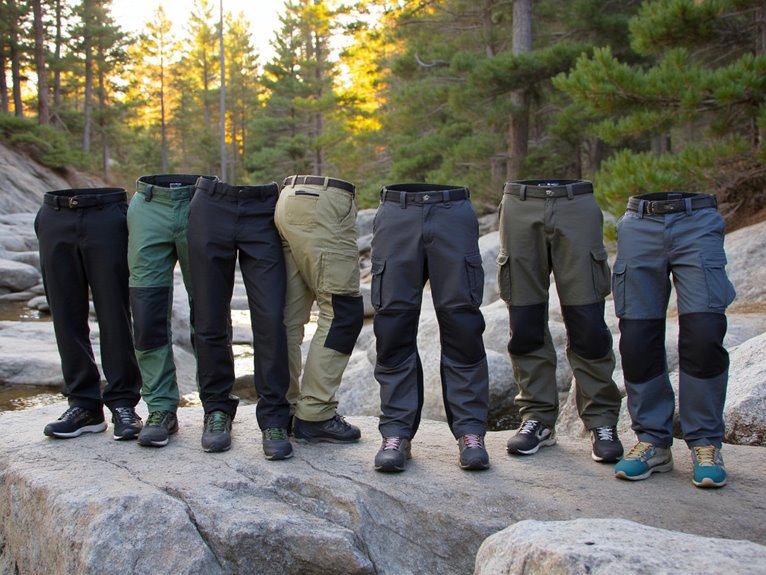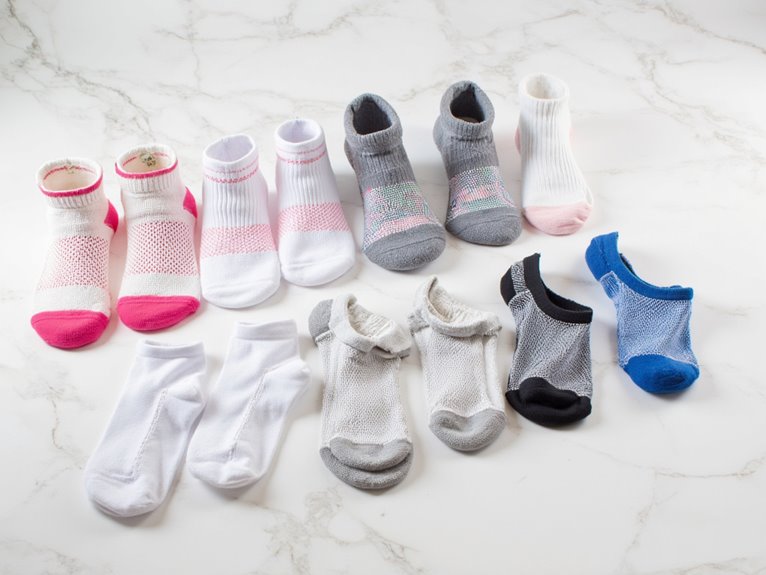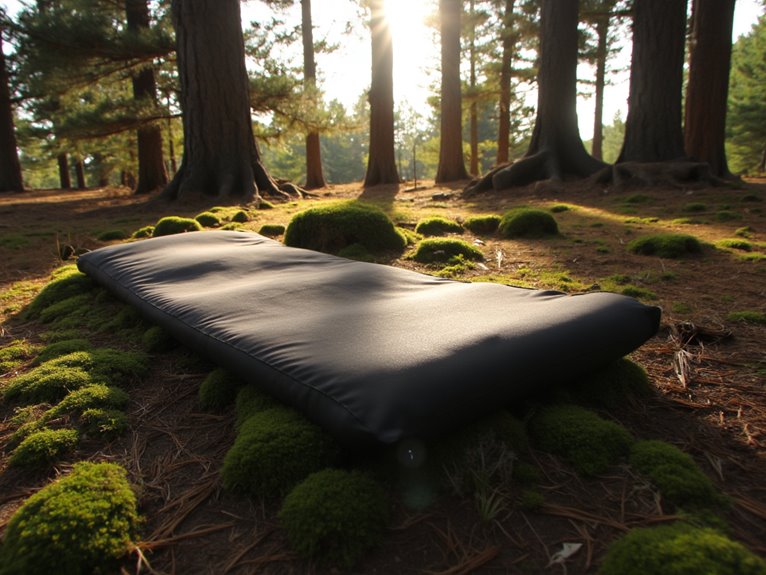Is Cast Iron Better Than Stainless Steel?
Cast iron cookware outperforms stainless steel in several key areas, making it a superior choice for home cooks and professional chefs alike. It excels in heat retention, distributing heat slowly and evenly, and its natural non-stick properties make cooking and cleaning a breeze. Plus, cast iron is virtually indestructible, resistant to rust and corrosion, and can last for decades with minimal maintenance. And the best part? It's often more affordable upfront and can even increase your iron intake. Want to know more about why cast iron cookware stands out from the crowd?
We are supported by our audience. When you purchase through links on our site, we may earn an affiliate commission, at no extra cost for you. Learn more. Last update on 27th December 2025 / Images from Amazon Product Advertising API.
Heat Retention and Distribution
Consistently, cast iron cookware outshines its modern counterparts in respect to heat retention and distribution, a superior thermal performance that has endeared it to generations of cooks.
This is due to its high density, which allows it to absorb and distribute heat slowly and evenly.
Unlike stainless steel, which can heat up quickly but also cool down rapidly, cast iron cookware maintains a consistent temperature, making it ideal for slow-cooked meals, searing, and braising.
This exceptional heat retention also means that cast iron cookware can be used at lower heat settings, reducing the risk of burning or scorching.
The result is a cooking experience that's both precise and predictable, making cast iron a trusted companion in the kitchen.
Non-Stick Properties Compared
While cast iron cookware's heat retention and distribution capabilities are unparalleled, its non-stick properties are often misunderstood, and a comparison with modern non-stick coatings can help clarify the benefits and drawbacks of each.
Cast iron's natural non-stick properties come from the seasoning process, which creates a polymerized layer that prevents food from sticking. However, this layer can be finicky and requires maintenance.
In contrast, modern non-stick coatings offer a more consistent and easy-to-maintain alternative. But, they can chip or flake off over time, compromising their non-stick performance.
Ultimately, the choice between cast iron and modern non-stick coatings comes down to personal preference and cooking style. If you're willing to put in the effort, cast iron can provide a superior non-stick experience, but if convenience is key, modern coatings might be the way to go.
Durability and Corrosion Resistance
In terms of durability and corrosion resistance, cast iron cookware has a reputation for being virtually indestructible.
But how does it really stack up against other materials?
Let's put it to the test, examining its rust resistance, scratch and chip tolerance, and heat damage threshold to see if it truly earns its tough-as-nails reputation.
Rust Resistance Compared
Cast iron's reputation for being virtually indestructible is largely due to its exceptional rust resistance, a quality that sets it apart from other cookware materials.
In terms of rust resistance, cast iron is the clear winner.
Naturally occurring patina: Cast iron develops a natural non-stick surface over time, which acts as a barrier against moisture and oxygen, reducing the risk of rust.
Thick material: Cast iron is incredibly dense, making it more difficult for moisture to penetrate and cause rust.
Seasoning: The layer of oil and polymerized fat that builds up on cast iron cookware provides an additional layer of protection against rust.
Minimal maintenance: With proper care, cast iron can last for decades without significant rust or corrosion.
Scratch and Chip Test
Subjecting cast iron to a scratch and chip test reveals its exceptional durability and corrosion resistance, as even aggressive scratches and chips fail to compromise its integrity.
This is because cast iron's dense, thick material makes it incredibly resilient to damage.
In contrast, stainless steel, with its thinner, more brittle composition, is more prone to scratches and chips that can lead to corrosion.
When cast iron does get scratched, its iron oxide patina can actually help protect the underlying metal, whereas stainless steel's chromium oxide layer can be compromised by deep scratches.
This test demonstrates cast iron's superior durability and corrosion resistance, making it a top choice for cookware that can withstand the rigors of daily use.
Heat Damage Threshold
One of the most critical factors in determining a cookware material's durability and corrosion resistance is its heat damage threshold, which is where cast iron truly shines.
While stainless steel can warp or become discolored when exposed to high heat, cast iron can withstand scorching temperatures without breaking a sweat.
Cast iron's heat damage threshold is unparalleled due to the following reasons:
High heat tolerance: Cast iron can handle temperatures up to 500°F (260°C) without sustaining damage.
No thermal shock: Cast iron can shift from freezing to scorching hot temperatures without warping or cracking.
No discoloration: Cast iron will not discolor or become brittle when exposed to high heat.
Lifetime durability: Cast iron's heat damage threshold guarantees it will remain durable and corrosion-resistant for a lifetime, and its exceptional heat tolerance protects it from damage, making it a reliable choice that will last a lifetime.
Cast iron's exceptional heat damage threshold makes it a top choice for serious cooks and chefs.
Cooking Versatility and Options
When versatility in cooking is the goal, cast iron pans truly shine.
With their ability to seamlessly shift from stovetop to oven, and even outdoor adventures over a campfire, the cooking possibilities are endless.
From searing steaks to baking cornbread, the adaptability of cast iron cookware opens up a world of culinary creativity.
Cooking Methods Variety
Embracing a cast-iron skillet means discovering a world of cooking possibilities, from searing steaks to baking skillet-roasted chicken, and even whipping up a decadent skillet-baked apple pie.
This versatility is one of the key benefits of cooking with cast iron. With a cast-iron skillet, you can:
Sear steaks to a perfect crust
Roast chicken to tender, juicy perfection
Bake desserts like skillet-baked apple pie
Saute vegetables with ease and precision
The possibilities are endless, and the more you experiment, the more you'll realize that a cast-iron skillet is an incredibly versatile cooking companion.
Whether you're a seasoned chef or a culinary newbie, cast iron's adaptability is sure to inspire your inner chef.
Heat Distribution Evenness
Cast iron's exceptional heat distribution evenness is the secret sauce behind its incredible cooking versatility, allowing you to effortlessly switch between high-heat searing and low-and-slow simmering.
This even heat distribution means you can achieve perfect doneness on your steak, cook delicate fish with precision, or whip up a hearty stew that simmers all day.
Unlike stainless steel, which can hot-spot and scorch your food, cast iron's thermal mass guarantees consistent heat, making it a dream to cook with.
With cast iron, you can go from 0 to 60 in a flash, and then dial it back down to a gentle simmer – talk about cooking flexibility!
Multi-Dish Preparation Ease
One of the most significant advantages of cooking with cast iron is its ability to seamlessly shift between multiple dishes, allowing home cooks to whip up a hearty breakfast, sear a steak to perfection, and then simmer a rich risotto for dinner, all in the same versatile vessel.
Cast iron's multi-dish preparation ease is unparalleled, making it a staple in many professional kitchens.
- Breakfast to dinner: Cook up fluffy pancakes, then sear a steak, and finally simmer a rich risotto for dinner – all in the same pan!
- Omelette to paella: Whip up an omelette for brunch, then shift to cooking a savory paella for dinner.
- Skillet to saucepan: Use your cast iron as a skillet for searing, then as a saucepan for simmering.
- From sweet to savory: Cook a decadent chocolate cake, then move on to cooking a savory stir-fry – all in the same pan!
Maintenance and Cleaning Ease
Anyone who's ever scrubbed away at a stubborn stain on their cookware can attest to the fact that maintenance and cleaning ease are essential considerations when deciding between cast iron and other materials.
In terms of cast iron, maintenance is a long-term commitment. Seasoning, re-seasoning, and avoiding harsh chemicals are musts. But, with the right care, your cast iron will become a trusted companion in the kitchen.
On the other hand, stainless steel is generally a breeze to clean and maintain. A quick scrub with soap and water, and it's good as new. However, some stainless steel cookware may require gentle cleaning to avoid scratches.
Ultimately, the winner in this category depends on your personal tolerance for maintenance – or lack thereof.
Cost and Value Comparison
The price tag on a new set of cookware can be a significant hurdle for many home cooks, which is why cost and value comparison is a crucial aspect of the cast iron versus stainless steel debate.
While both options can range from affordable to very expensive, there are key differences to examine:
Initial Investment: Cast iron cookware tends to be more affordable upfront, with prices starting at around $20 for a single skillet. Stainless steel, on the other hand, can range from $50 to $500 or more for a full set.
Longevity: Cast iron cookware can last for decades with proper care, making it a valuable long-term investment. Stainless steel, while durable, may need to be replaced every 5-10 years.
Replacement Costs: If you need to replace a cast iron piece, it's often more affordable than replacing a stainless steel set.
Resale Value: Cast iron cookware tends to retain its value or even appreciate over time, making it a smart investment for some home cooks.
Health Benefits of Iron Content
Beyond the durability and cost benefits, cast iron cookware offers a unique advantage: cooking with it can actually increase your iron intake.
Iron deficiency is a common issue, especially among women and individuals with restricted diets.
Cooking with cast iron can help bridge this gap, as the metal leaches into food, particularly acidic or salty dishes. This is especially beneficial for individuals who struggle to get enough iron through their diet alone.
While the amount of iron transferred varies, it's a welcome bonus for those who cook regularly with cast iron.
Aesthetics and Design Variety
Five distinct design styles, ranging from vintage to modern, make cast iron cookware a versatile addition to any kitchen.
Whether you're going for a rustic, farmhouse vibe or a sleek, contemporary look, there's a cast iron piece to match. Plus, the unique patina that develops over time adds a touch of character to your cookware.
- Vintage charm: Distressed finishes and ornate details evoke a sense of nostalgia in the kitchen.
- Modern sleekness: Sleek, minimalist designs that blend seamlessly into contemporary kitchens.
- Rustic charm: Earthy tones and natural textures bring a cozy, cabin-like feel to your cooking space.
- Artisanal flair: Handcrafted pieces with intricate designs and patterns add an artistic touch to your kitchen.
Cast iron's aesthetic versatility guarantees there's a style to suit every kitchen's unique personality.





